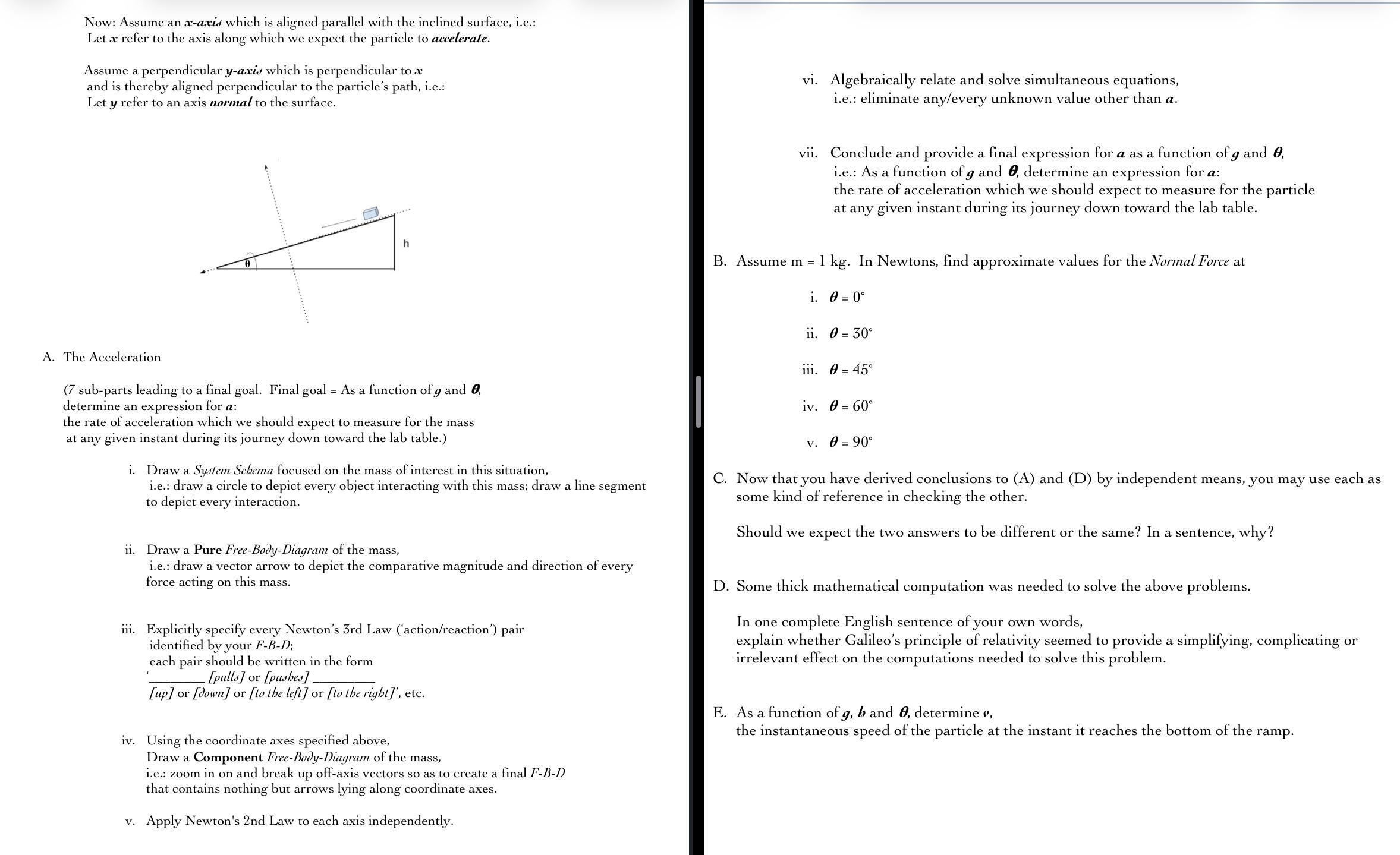Answered step by step
Verified Expert Solution
Question
1 Approved Answer
Now: Assume an x-axis which is aligned parallel with the inclined surface, i.e.: Let & refer to the axis along which we expect the

Now: Assume an x-axis which is aligned parallel with the inclined surface, i.e.: Let & refer to the axis along which we expect the particle to accelerate. Assume a perpendicular y-axis which is perpendicular to x and is thereby aligned perpendicular to the particle's path, i.e.: Let y refer to an axis normal to the surface. A. The Acceleration h (7 sub-parts leading to a final goal. Final goal = As a function of g and 0, determine an expression for a: the rate of acceleration which we should expect to measure for the mass at any given instant during its journey down toward the lab table.) i. Draw a System Schema focused on the mass of interest in this situation, i.e.: draw a circle to depict every object interacting with this mass; draw a line segment to depict every interaction. ii. Draw a Pure Free-Body-Diagram of the mass, i.e.: draw a vector arrow to depict the comparative magnitude and direction of every force acting on this mass. iii. Explicitly specify every Newton's 3rd Law ('action/reaction') pair identified by your F-B-D; each pair should be written in the form [pulls] or [pushes]. [up] or [down] or [to the left] or [to the right]', etc. iv. Using the coordinate axes specified above, Draw a Component Free-Body-Diagram of the mass, i.e.: zoom in on and break up off-axis vectors so as to create a final F-B-D that contains nothing but arrows lying along coordinate axes. v. Apply Newton's 2nd Law to each axis independently. vi. Algebraically relate and solve simultaneous equations, i.e.: eliminate any/every unknown value other than a. vii. Conclude and provide a final expression for a as a function of g and 0, i.e.: As a function of g and , determine an expression for a: the rate of acceleration which we should expect to measure for the particle at any given instant during its journey down toward the lab table. B. Assume m = 1 kg. In Newtons, find approximate values for the Normal Force at i. 0 = 0 ii. 0 = 30 iii. 0 = 45 iv. 0 = 60 v. 0 = 90 C. Now that you have derived conclusions to (A) and (D) by independent means, you may use each as some kind of reference in checking the other. Should we expect the two answers to be different or the same? In a sentence, why? D. Some thick mathematical computation was needed to solve the above problems. In one complete English sentence of your own words, explain whether Galileo's principle of relativity seemed to provide a simplifying, complicating irrelevant effect on the computations needed to solve this problem. E. As a function of hand , determine v, 9, the instantaneous speed of the particle at the instant it reaches the bottom of the ramp. or
Step by Step Solution
★★★★★
3.38 Rating (148 Votes )
There are 3 Steps involved in it
Step: 1
The skin friction coefficient Cf for a laminar boundary ...
Get Instant Access to Expert-Tailored Solutions
See step-by-step solutions with expert insights and AI powered tools for academic success
Step: 2

Step: 3

Ace Your Homework with AI
Get the answers you need in no time with our AI-driven, step-by-step assistance
Get Started


